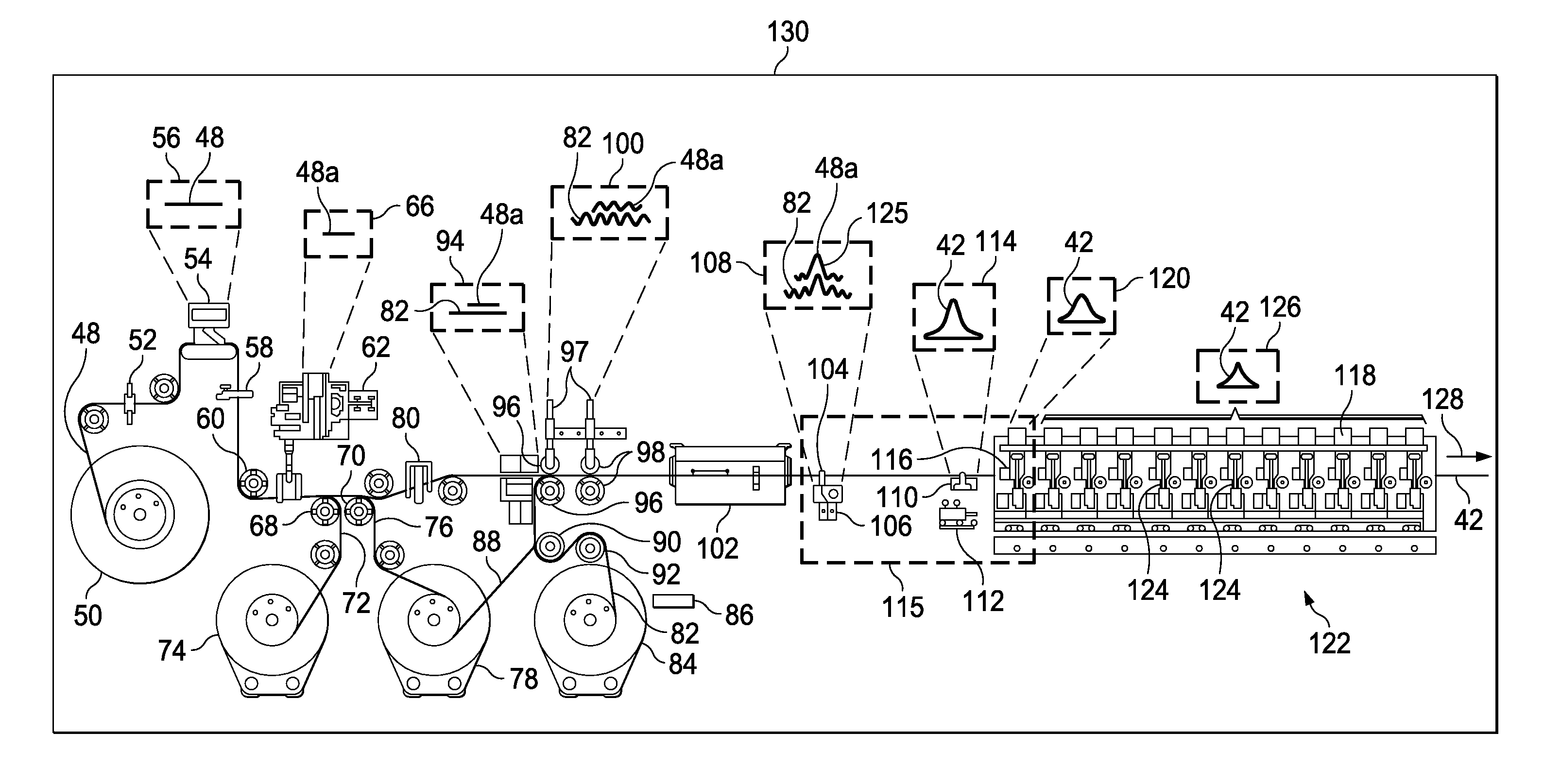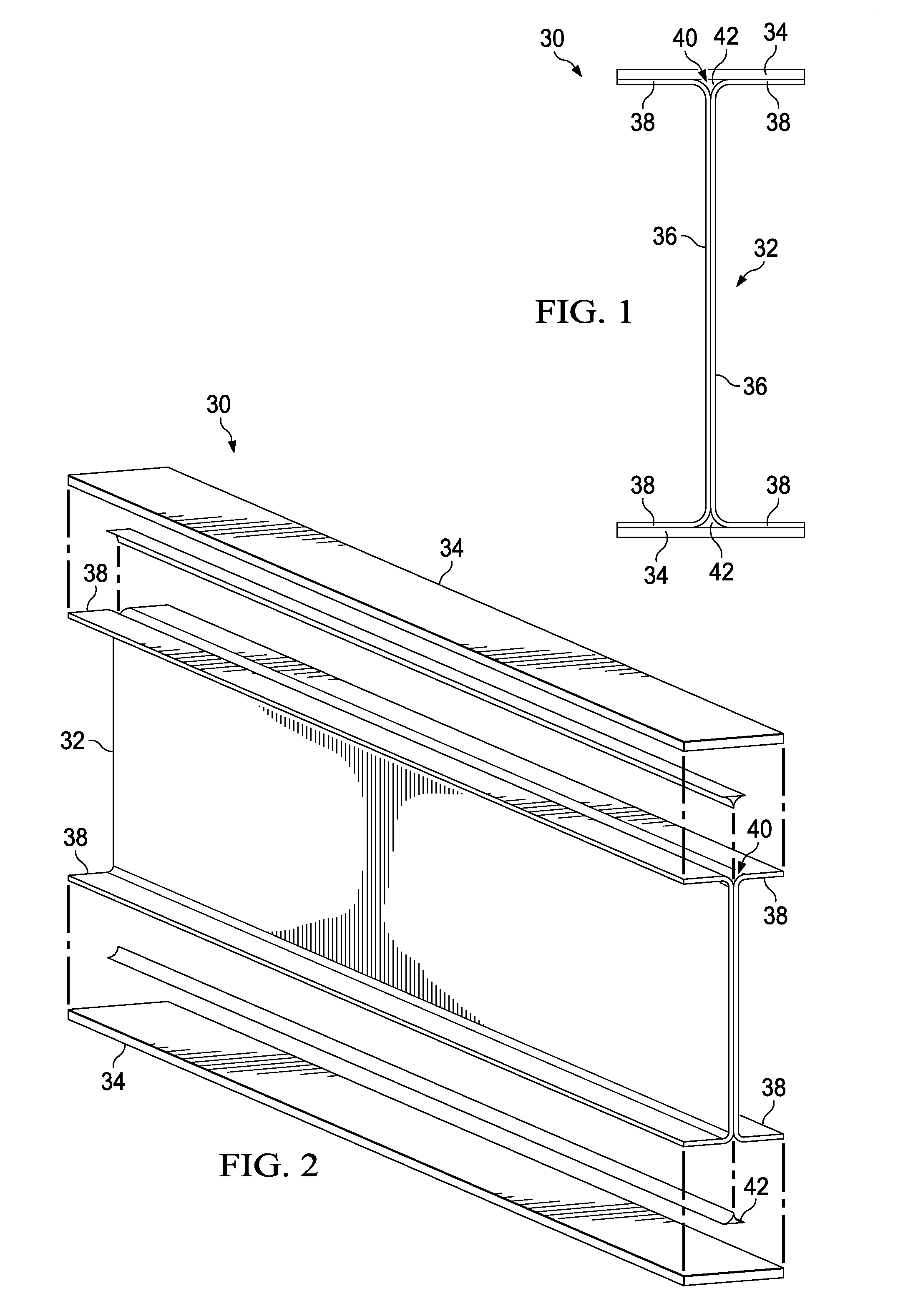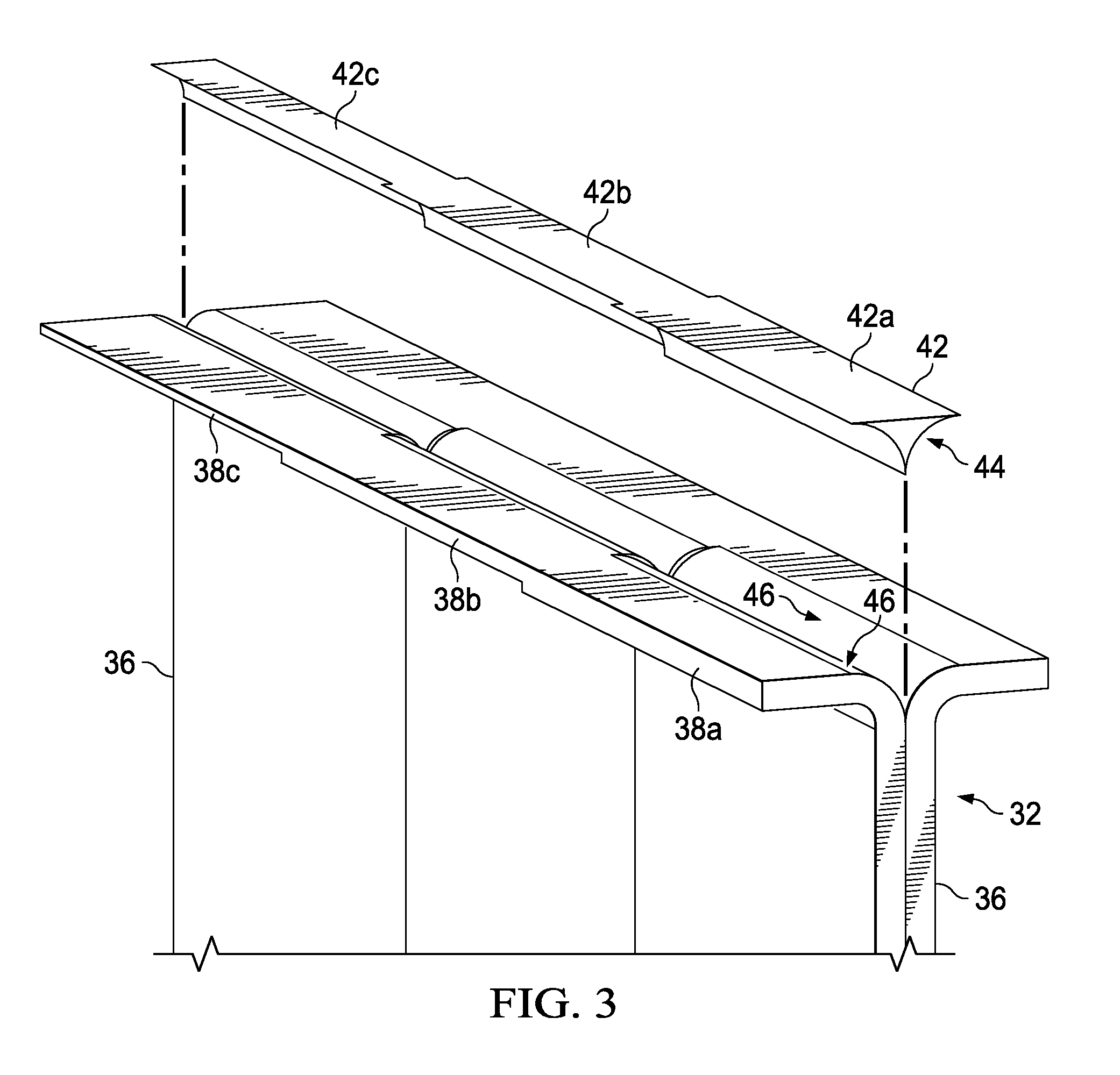Automated fabrication of composite fillers
a composite filler and automatic technology, applied in the field of composite filler fabrication, can solve the problems of inability to meet the requirements of peak definition, time-consuming production technique, inadequate pre-conditioning, etc., and achieve the effects of smooth surface finish, good quality compaction, and improved dimensional control
- Summary
- Abstract
- Description
- Claims
- Application Information
AI Technical Summary
Benefits of technology
Problems solved by technology
Method used
Image
Examples
Embodiment Construction
[0045]The disclosed embodiments relate to a method and apparatus for producing high-performance composite fillers, sometimes referred to hereinafter as “radius fillers”, The radius fillers may be used to strengthen primary composite structures and assemblies, such as the composite laminate I-beam 30 shown in FIGS. 1, 2 and 3. The I-beam 30 comprises upper and lower composite laminate caps 34 joined by a web 32. The I-beam 30 may be produced by joining a pair of C-shaped, composite laminate members 36 having outwardly turned flanges 38, each of which transitions to the web 32 through a radiused corner 46.
[0046]The area between adjacent radius corners 46 and a cap 34 forms a void 40 that may be filled by a radius filler 42 produced in accordance with the disclosed embodiments described below. In the illustrated embodiment, the gauge or thickness of the C-shaped members 36 varies along its length, consequently, different sections 38a, 38b, 38c of the flanges 38 have differing thickness...
PUM
| Property | Measurement | Unit |
|---|---|---|
| Gravity | aaaaa | aaaaa |
Abstract
Description
Claims
Application Information
 Login to View More
Login to View More - R&D
- Intellectual Property
- Life Sciences
- Materials
- Tech Scout
- Unparalleled Data Quality
- Higher Quality Content
- 60% Fewer Hallucinations
Browse by: Latest US Patents, China's latest patents, Technical Efficacy Thesaurus, Application Domain, Technology Topic, Popular Technical Reports.
© 2025 PatSnap. All rights reserved.Legal|Privacy policy|Modern Slavery Act Transparency Statement|Sitemap|About US| Contact US: help@patsnap.com



